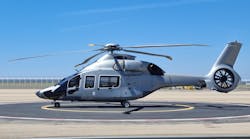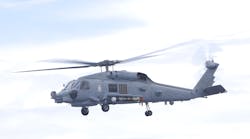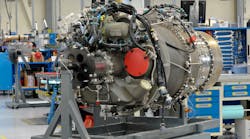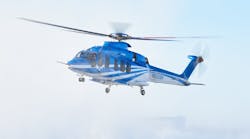Rivets may be some of the smallest parts used in aircraft – including helicopters - but they serve an out size function. After all, rivets are critical to maintaining the structural integrity of the aircraft and thousands are used in the manufacture and maintenance of a single helicopter. Yet, probably because of their size and the numbers used routinely in performing maintenance, their significance can be taken for granted. But, particularly in helicopters, that can be dangerous.
To me, the significance of rivets gained particular prominence in my mind when I worked on a helicopter accident as a National Transportation Safety Board member in 1997. The helicopter in that accident, a Eurocopter MBB-BK117-B2, crashed shortly after take off into the East River in Manhattan. The aircraft was owned and operated by Colgate-Palmolive Inc. and was used to ferry corporate executives between the company’s headquarters in Manhattan and its research facility in New Jersey. The crew was able to escape the sinking helicopter but the two passengers were not so lucky. One executive was killed and the other injured.
Blind vs. solid rivets
The NTSB report that followed found that “the upper 3 feet of the vertical fin had failed due to fatigue fractures and had separated along with the tail rotor assembly.” The investigators further determined that the failure occurred due to rivet fatigue caused by the helicopter’s vibrations.
What was noteworthy was that the original rivets had been replaced after maintenance was performed on the tail. The replacement rivets were not the same type specified by the manufacturer in its design drawings. In fact, solid rivets had been replaced with blind rivets.
After the accident, the FAA examined other similar helicopters and found that numerous of them that were using these blind rivets, instead of solid rivets, showed signs of fatigue. Further testing found that blind rivets were significantly more susceptible to fatigue damage than solid rivets.
Check manufacturer's specs
As a long-time mechanic, I was surprised by this finding. Like many of you, I’m sure, I had used blind rivets interchangeably with solid rivets for years and years in performing maintenance. In fact, whenever we were in a rush to complete repairs or the repair was in an awkward position, we would use blind rivets because they would considerably reduce the repair time needed and required only one mechanic.
I had never thought to check the manufacturer’s specifications before substituting blind rivets for solid ones. I think that’s probably why this accident was such an eye-opener for me. It challenged something we all had done so routinely for so long.
Since the time of this accident, a number of blind rivet manufacturers have sought to improve the fatigue strength of their rivets. Some of these blind rivets may now be acceptable for use in high-vibration environments. But there is only one way for a mechanic to know for sure. He or she needs to check the aircraft manufacturer’s recommendations and make sure that the rivet used meets the manufacturer’s specifications.



